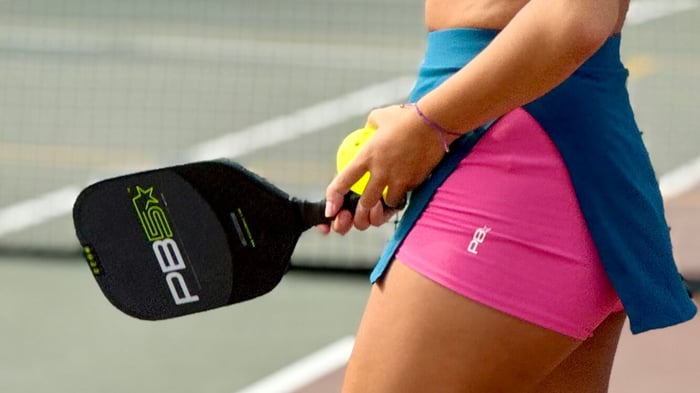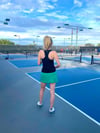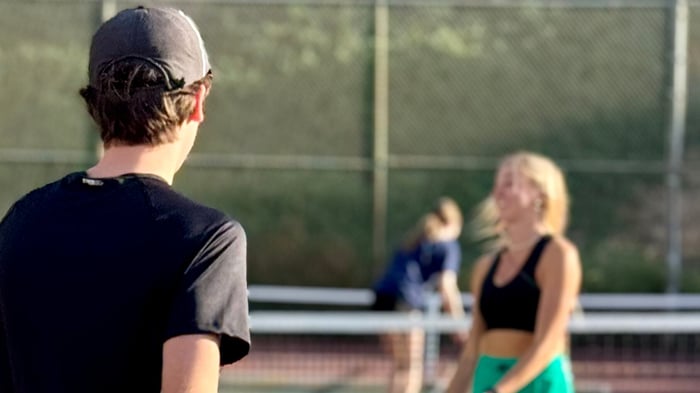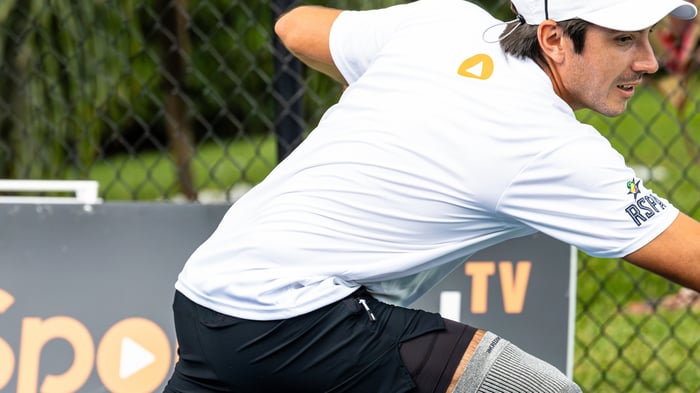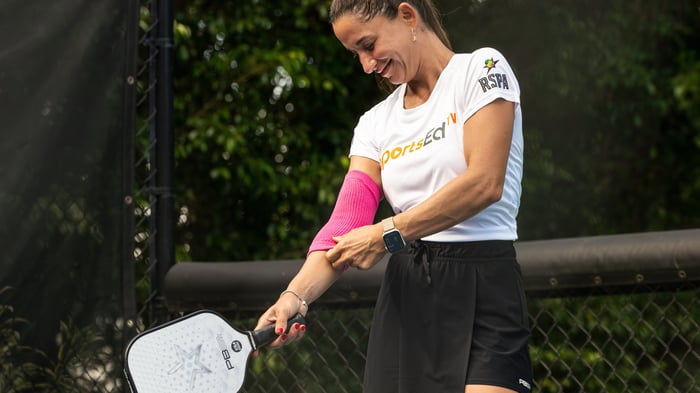Key takeaways:
Step-by-step pickleball drills not only improve your skills but also foster community and camaraderie on the court.
Dynamic warm-ups and progressive drills tailored to skill levels are essential for effective practice and injury prevention.
Organized group sessions with clear goals and inclusive activities create an environment where players of all levels can grow together.
Improving at pickleball isn’t only about refining your serve or mastering a dink. Some of the most meaningful growth happens during structured practice sessions that bring players together. Step-by-step drills help build muscle memory and sharpen technique, but they also create a sense of community. Whether you're helping a new player find their rhythm or exchanging challenging rallies with a seasoned partner, these shared experiences foster real connection and camaraderie that make the sport so rewarding.
The beauty of progressive drills is that they adapt to where you are and help guide you toward where you want to be. With the right structure, practice becomes both effective and enjoyable. Every small breakthrough becomes a shared win. In this guide, you'll find warm-ups to get your body and mind ready, drills that develop key skills at every level, and group exercises designed to keep the energy high and the learning continuous. Plus, PB5star’s performance-ready apparel ensures you stay confident and comfortable through every rep.
Let’s explore the drills that help you grow your game while strengthening the connections that keep you coming back.
Warming up: The foundation of effective pickleball practice
Before diving into drills or competitive play, your body needs a proper transition from everyday movement to the quick pivots and explosive lateral shifts that pickleball demands. A good warm-up raises your body temperature and prepares your muscles for action. Unlike static stretching, which can actually reduce performance, dynamic movements get you ready to move with power and control. Forward lunges with rotation engage your core, lateral lunges mirror the side-to-side movement you’ll rely on during matches, and leg swings loosen up your hips for those long reach shots. Add in some arm circles to activate your shoulders, and you’ve got a full-body routine that primes the muscle groups responsible for quick, athletic movement.
Warm-ups are just as important for your mind as they are for your body. Light paddle work, like gentle dinks or slow swings, helps activate the brain-body connection, making your movements feel more intentional once drills begin. This mental prep turns your warm-up into a launchpad for focused, productive practice.
Starting as a group adds another layer of value. Moving through a shared warm-up routine brings players together, creating a sense of team energy and mutual support right from the start. It helps beginners feel included and gives more experienced players a chance to lead by example, offering tips or encouragement. A group warm-up sets the tone for a positive, collaborative session where everyone feels motivated to improve.
Step-by-step drills for beginners: Building skills and confidence
New players improve quickly when they start with simple, structured drills that focus on consistency and small wins. These beginner-friendly pickleball exercises lay the foundation for solid gameplay while creating chances to connect, share tips, and build confidence together.
Master the dinking foundation by standing at the kitchen line with a partner, hitting soft, controlled shots back and forth below net height to develop touch and feel.
Build volley consistency by working on steady, close-to-net volleys, focusing more on control and timing than power.
Develop groundstroke reliability with baseline rallies, starting slow and increasing pace as accuracy and confidence improve.
Master serve-and-return patterns by combining basic serves with return drills that teach positioning and help players understand court flow.
Target kitchen and sideline areas using cones or visual markers to build shot accuracy while turning drills into fun, game-like challenges.
Simulate game scenarios with doubles-style drills that teach positioning, communication, and teamwork in a supportive, low-pressure setting.
Progressive drills: Advancing your pickleball game
Once the basics are locked in, it’s time to level up. Progressive drills help players move beyond casual play by introducing more dynamic footwork, smarter shot choices, and better court awareness. These drills are perfect for bridging the gap between recreational games and competitive strategy.
Master third-shot drop transitions by starting with soft dinks from midcourt and gradually moving back, learning how to land controlled drops into the kitchen.
Build forehand-backhand flow with a rebounder or wall, switching sides every few strokes to strengthen control and improve footwork.
Enhance rapid-fire reflexes by standing at the kitchen line while a partner feeds quick balls from the baseline, training fast hands and paddle awareness.
Practice communication patterns with a partner by calling shots, switching positions, and coordinating movement to develop stronger teamwork.
Challenge court coverage using cone drills that combine lateral footwork and target hitting, simulating real-time shot adjustments and recovery.
Create game-like intensity with focused challenges like completing three clean kitchen drops in a row or holding a 10-shot rally under time pressure to build mental toughness and match readiness.
Organizing fun and effective group drill sessions
The real magic of group pickleball drills happens when everyone feels included, challenged, and connected. Rotating partners during practice helps players adapt to different styles while encouraging friendships across all skill levels. Fun formats like King of the Court keep energy high as players rotate in and out with others cheering them on. Skinny Singles, played on half the court, is another great way to encourage quick games and frequent partner swaps. These formats give newer players a chance to learn from more experienced ones, while seasoned players benefit from fresh perspectives and new tactical ideas.
To keep things on track, structure your sessions with clear, simple goals. A one-hour practice might include 10 minutes of warm-up, 20 minutes of focused drills, 20 minutes of game-based play, and a few minutes at the end for cool-down and discussion. Announce the objective upfront, something like "let's focus on consistent dinking for the next 15 minutes", so everyone knows what they’re working on and can track their progress as a group.
Frequently asked questions about step-by-step pickleball drills
Players often have practical questions about implementing effective drill routines that work for their specific situations and skill levels. These step-by-step pickleball drills FAQ answers address the most common concerns we hear from community organizers and players who want to create inclusive, productive practice sessions.
How can you structure pickleball drills to improve your game with friends?
Rotate partners every 10-15 minutes to expose everyone to different playing styles and skill levels, while setting clear objectives like "maintain three 10-shot rallies" to keep sessions focused. Mix individual skill work with doubles scenarios that emphasize communication and teamwork, creating natural opportunities for players to learn from each other. Whether you're working with four players or 16, this approach transforms practice into social connection while ensuring everyone improves together.
Which warm-up routines prepare you for effective pickleball practice?
Dynamic movements like lateral lunges, leg swings, and arm circles prepare your body for the explosive lateral shifts and quick pivots that pickleball demands. Incorporate light paddle work and practice swings during warm-up to activate the neural pathways needed for strategic gameplay. A 10-minute group warm-up routine creates shared purpose while reducing injury risk and setting a collaborative tone for the entire session.
How can drills be modified for accessibility or different ability levels?
Adjust court positioning by moving players closer to the net for better reach, or use larger targets and slower-paced exercises for those developing coordination. Create multiple stations with varying difficulty levels so players can choose challenges that match their current abilities, and adapt group sizes by forming smaller circles for intimate skill work or larger rotations for tournament-style practice. The key is maintaining the social aspect while ensuring everyone can contribute meaningfully to the session.
Play with confidence and style
Step-by-step drills do more than sharpen your technique. They help build real connections and lasting friendships, creating the kind of shared growth that makes pickleball so much more than just a game. When you pair consistent practice with gear that feels good and fits your style, you set yourself up for both personal progress and stronger community bonds. Our performance-focused apparel is designed to support every movement, from warm-ups to advanced footwork, while helping you feel confident and look great on and off the court.
Progressing from beginner drills to competitive-level strategies is a lot more fun when you're surrounded by players who value improvement, connection, and a good time. Be sure to check out our PB5 Court2 shoes for men and women, built with Dynamic Stability Assist™ technology and a lightweight design that keeps you supported through every pivot and sidestep. Want to keep the momentum going? Share your favorite drills in the comments, or join us at upcoming events to practice together, connect with fellow players, and take your game to the next level.



